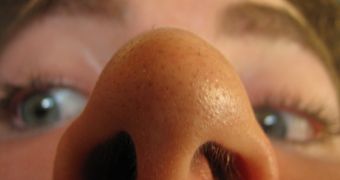A new study carried out by Rhode Island Hospital found the amounts and locations of MRSA colonization on the human body.
Methicillin-resistant Staphylococcus aureus – MRSA, is usually carried in the nose (nares) and in this case, it is a risk factor for a very invasive infection, surgical site infection included.
MRSA can also be located under the arms (axilla), the groin, or perineum (skin between the rectum and genitals), the problem is that there are few studies to date, that assessed the differences in quantity of MRSA at different body sites.
Some of these studies have found that the biggest amount of MRSA was carried in the nose, representing a high risk of transmission to others and of infection to the patient.
This new study coming from Rhode Island Hospital, managed to clarify the quantity of MRSA at different body sites and also the relationship between the quantities at different sites.
What the investigators found was that culturing the nose was more likely to reveal MRSA than culturing the other locations.
They also discovered a strong correlation between the quantity of MRSA in the nose and the probability that other body sites are colonized as well – a large quantity of MRSA in the nose of a patient, means that there is very likely to find a large quantity of MRSA in their axilla, perineum, or groin as well.
“This study shows us that the quantities of MRSA at different body sites are highly correlated,” explained Leonard Mermel, DO, medical director of the department of epidemiology and infection control at Rhode Island Hospital and lead author of the study.
“Also, if screening cultures are to be done for MRSA, it is best to screen the nose and groin to get the highest yield.”
However, the researchers couldn't find a correlation between the number of body sites with MRSA and the probability of having an active MRSA infection, when the cultures were obtained or in the year before the study.
And the surprising thing was that, of the patients who had MRSA in their nose at the time the cultures were obtained, those who had an active MRSA infection also had a low quantity of MRSA, compared to those that did not have an active infection at that time, or during the year before the enrollment.
“We hope that that future studies will assess whether or not a greater number of body sites colonized with MRSA or a greater quantity of MRSA at those body sites impacts the likelihood of future MRSA infections,” concluded Mermel.
This study is published in the Journal of Clinical Microbiology.

 14 DAY TRIAL //
14 DAY TRIAL //